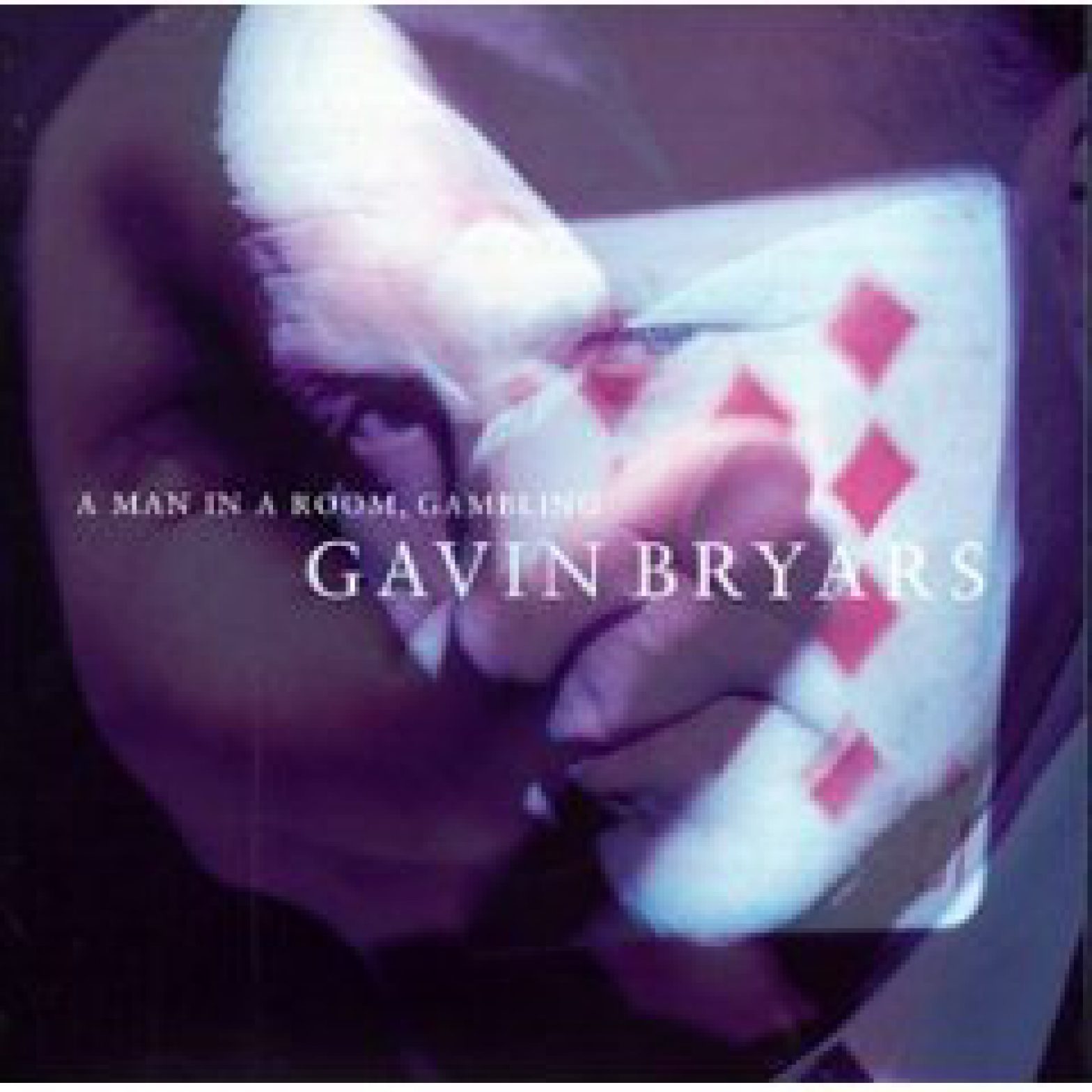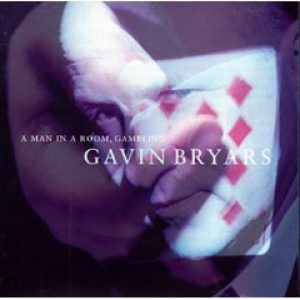Point 456 514-2
Gavin’s Notes:
A Man in a Room Gambling
(This note is a modified, and shortened, version of the article which I wrote on Juan Muñoz for the Art magazine Parkett)
In 1992 Artangel asked me to speak with the Spanish artist Juan Muñoz about a possible collaboration to create a series of pieces for radio. Naturally the idea of working with a sculptor in a non-visual medium was interesting and challenging, especially when it emerged that what we would be dealing with was the idea of describing actions which themselves involve visual illusion and trickery and to place them in a broadcasting framework.
Our discussion about radio resurrected my long-standing interest in the work of Glenn Gould, whose highly original approach to recording techniques in record production was paralleled by a vision of radio as a creative medium (“Radio as Music”). Radio is a beautiful medium for many reasons. It stimulates the visual imagination; the listener can move between casual and attentive modes of listening; it moves inexorably through time, as well as being used as a way of measuring clock time (timing an egg to the duration of a medium duration news bulletin). It can also function as ambience, and indeed for a great deal of the time this is the preferred mode of attention for the “listeners” of radio. On the other hand everyday life can equally serve as an unfocused (ambient) activity while the radio itself is playing – the preparation a meal during a radio play for example.
For our project, which was called eventually A Man in a Room Gambling, Juan wrote 10 texts, each one describing the manipulation of playing cards – dealing from the bottom of the pack, avoiding failure in the Three-Card Trick, how to palm a card and so on. Some of this material was culled from the writings of the extraordinary Canadian S. W. Erdnase and especially his book The Expert at the Card Table which contains some of the most perfectly constructed sleights of hand in card manipulation. We decided that each would last exactly 5 minutes and would be designed to be placed before the last radio News of the evening so that the programme, in Britain at least, would be experienced like our encounters with the Shipping Forecast, which is broadcast at four precise times during the day by the BBC. For his part, Juan imagined a listener driving along a motorway at night being bemused by this fleeting and perhaps enigmatic curiosity, in fact precisely the way in which most listeners encounter the Shipping Forecast.
In recording the speaking voice, of course, Juan read each of the texts at his own pace and each one lasted a different length of time, varying in length from 3 minutes to 4 minutes 30 seconds. Each text therefore had to be manipulated both to make it fit the 5 minute format in terms of the overall duration and to establish precise conventions whereby at the start of the programme Juan would be heard to say “Good Evening” and at the end “Thank you and Good Night”. In addition, and perhaps crucially, each of the texts is accompanied by music, at exactly the same tempo for each, giving an overall unifying texture to each five-minute piece and to the whole set. Like an apparently strict musical form the five minute whole is broken into structural parts – a descriptive preamble, the action of taking the cards, the development of the cards’ manipulation and the revelation of what has been achieved. The presence of the music also serves the additional function of intensifying the trickster’s duplicity in the following way. When a listener is trying to follow the instructions he may encounter a passing melodic phrase in the accompanying music which takes his attention away from the description for a moment and once this happens he may be lost. Within certain programmes, too, there are additional verbal interjections. These take the form of brief repetitions of individual words by a Japanese speaker, who takes the implied role of an innocent bystander trying to practice the trick as the speaker describes it. In the ninth programme, which is presented in an apparently improvisational way, the speaker claims to have lost his prepared text and the ambience is changed with the addition of environmental sounds (the street outside tapas bars near Seville Cathedral) as though the trick is in reality being performed in its habitual location viz. the street, as well as being reflected in the bafflement of the superimposed Japanese participant.
The original version of the music was written for string quartet, giving 10 five-minute string quartets in all. This is the version which is published by Schott. In addition I reorchestrated them all, to give a slightly different combination for each piece (one of which remains for string quartet) for recording and for performance by my own ensemble.
The full set of 10 pieces has, occasionally, been broadcast on radio within the spirit of the collaborators’ original intentions – most notably in Canada. Since the work’s inception it has evolved into live concert music, where groups of 4 or 5 are played in sequence, as here, and the orchestration has been modified to give each piece a slightly different instrumentation. The aim remains, as with the Shipping Forecast, to give the listener a hazy impression of what can be quite a dramatic activity and to generate in these five minutes a sense of an imaginary space….
(footnote)
In 1994 versions of all ten pieces were done in French in a project with La Muse en Circuit. The texts were read by an Argentinean actor. Five of these were performed as part of a concert at the Théâtre du Lierre, Paris. The music remains the same for both English and French versions of course. However, the resulting combination of music a French text works less well because of the far greater density of the texts – the translation almost doubled the number of words in each piece making the location of specific musical injections, which are placed quite precisely in the English text, somewhat arbitrary. Gavin Bryars.
Les Fiançailles
A sketch for Les Fiançailles (“engagement”) was written in 1983 for a scene in Robert Wilson’s CIVIL WarS, in which a Japanese bride delivers two texts: one in French announcing a forthcoming aristocratic marriage; the other an old text in Japanese announcing the link between the Sun and the Imperial throne.
When I gave a concert in the Secession Hall in Vienna, I developed the piece further to incorporate the special quality of the Viennese string players who played with me, making a concert work for string quintet, two pianos (8 hands) and percussion. In musical terms this related to the Secession Hall’s important role in Viennese music, in particular to its connection with early Schönberg and Mahler, and the writing for the high strings, for example, consciously evoked chamber music of the period.
When work resumed on CIVIL WarS in 1984, in addition to the original piece being used for the bride’s aria, this extended concert work appeared during a slow motion sequence where, at a particular point in the music, the actress Delphine Seyrig was to read quietly a letter written by Marie Curie to Pierre, her dead husband. The instrumentation has now been simplified to string quintet, solo piano and percussion.
Gavin Bryars.
The North Shore (1993)
This piece, originally for viola and piano, was written for Bill Hawkes and Nic Hodges to play at the opening of an exhibition of the work of James Hugonin* in Edinburgh. It has been subsequently expanded both in duration and instrumentation to give the present work for solo viola, strings and harp (or piano).
Through working with Bill Hawkes, and earlier with Alexander Balanescu, I have become more and more interested in the viola both in ensemble and as a solo instrument. Indeed I was originally to write a work for voice and viola for the exhibition but due to the unavailability of the singer I wrote this instrumental piece instead, retaining nevertheless the original intention of connecting the piece with a specific geographical region. I particularly like the relationship between the abstraction of Hugonin’s paintings and the location where they are painted – the North East of England.

Having already written a number of vocal pieces that use Northumbrian texts (by Caedmon) I decided however to move a little further down the coast, to Whitby where I had spent summers as a child and particularly to the cliffs by St Hilda’s Abbey. The North Shore, therefore, takes this austere location as its inspiration – the same as the descriptive narrative used for the vocal piece I subsequently wrote based on Bram Stoker’s Dracula (From Mina Harker’s Journal). It represents a kind of response to the “Idea of North” found in the work of Glenn Gould, as well as a reflection on the obsession of Jules Verne’s Captain Hatteras who, in his final madness, would walk only towards the north.
The piece is dedicated to Debbie Mason.
Gavin Bryars.
* See Gavin Bryars’ article about James Hugonin
The South Downs (1995)
for cello and piano
Of all musical instruments the lower strings are probably my favourites. Indeed they are in my family: I am a bass player, my two daughters are cellists and hearing my mother’s cello practice is the earliest sound I recall as a child. In my own ensemble the strings are predominantly low – viola, cello and bass, the cellist being Sophie Harris for whom The South Downs was written and who forms part of its dedication (‘to the cellists in my life’). This piece is the fourth in a series for solo instrument and accompaniment (piano and/or orchestra) in which each one has a title with a personal geographical connotation. The first, The Green Ray, for soprano saxophone, relates to western coasts (Scotland, North America); the second, The North Shore, for viola, refers to facing north from St. Hilda’s Abbey at Whitby; the third, for bass oboe, called The East Coast, alludes both to the east coast of Yorkshire and to the Bay of Fundy in Canada.
Those pieces, facing in opposite directions as it were, are in effect mirror images of each other, though coloured by the character of their implied location. Thus the bass oboe concerto is a cooler and more bleak version of The Green Ray, both being for reed instruments. With the two string pieces The North Shore’s implied austerity is balanced by the cello piece’s warmth. The area of the South Downs in question is, in fact, that around Birling Gap in Sussex, a location that means a great deal to me, and which has memories for Sophie too.
Gavin Bryars.
Performers:
Bill Hawkes, solo viola
Sophie Harris, solo cello
Tracks:
2. A Man in a Room, Gambling, for speaker & ensemble No. 8
3. A Man in a Room, Gambling, for speaker & ensemble No. 3
4. A Man in a Room, Gambling, for speaker & ensemble No. 9
5. A Man in a Room, Gambling, for speaker & ensemble No. 10
6. Les Fiançailles
7. The North Shore, for viola, strings, piano (or harp) & percussion
8. The South Downs, for cello & piano

